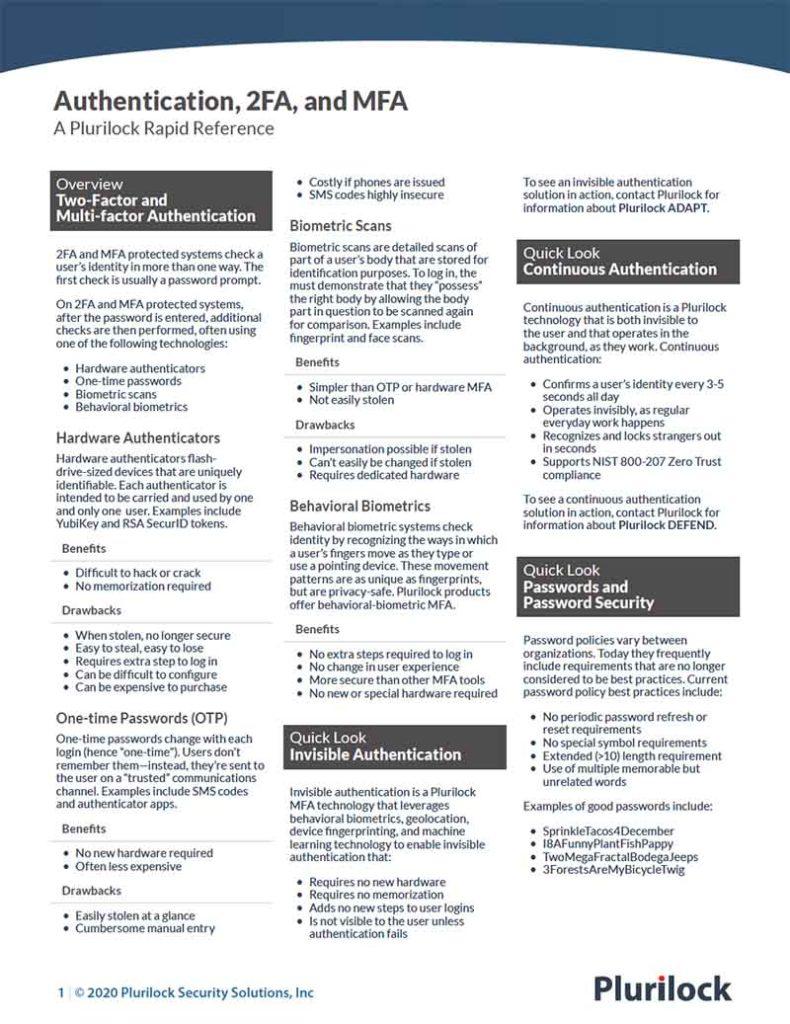Cybersecurity Reference > Glossary
Passive Authentication
Passive Authentication is a form of authentication in which the identity of the user is checked and confirmed without requiring specific additional actions for the purpose of authentication.
Instead, the user's activity, properties, or other observable data are gathered and analyzed for evidence of identity without additional intervention from, or work by, the user. Passive Authentication is, in essence, frictionless.
The invisible MFA technology in Plurilock ADAPT is a form of passive authentication, added to existing login prompts, that adds multiple additional identity verification factors without requiring additional steps from the user. Instead, identity signals are gathered as they perform the usual entry of their username and password, enabling much stronger identity confirmation without addition work from the user.

2FA/MFA Rapid Reference
Authentication at a glance
Download the 2FA/MFA Rapid Reference now:
- 2FA and MFA basics and common solutions
- The benefits and drawbacks of each
- Glossary of authentication terms
2FA/MFA Rapid Reference
- 2FA and MFA basics and common solutions
- The benefits and drawbacks of each
- Glossary of authentication terms








